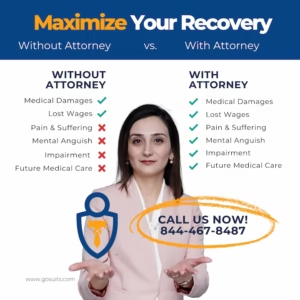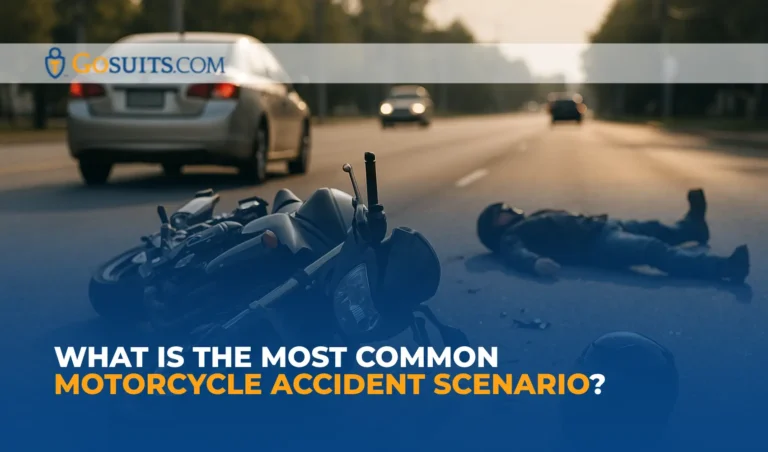Motorcyclists face unique dangers every time they take to the road. Without the protective barrier that cars provide, riders are often exposed to severe injuries in the event of a crash. Even when you take every precaution, such as wearing protective gear, staying visible, and following traffic laws, your safety can still be compromised by the carelessness of others. Understanding the most common motorcycle accident scenarios is not just important for prevention; it is critical for protecting your rights if an accident occurs. After a motorcycle accident, one of the most important steps is seeking legal guidance to help protect your interests. Handling the aftermath alone can be overwhelming and may place you at a disadvantage.
The Most Common Motorcycle Accident Scenario
One of the most common motorcycle accident scenarios involves a vehicle turning left in front of an oncoming motorcyclist. This situation accounts for a significant number of serious motorcycle accidents across the country. Several factors contribute to these crashes:
- Failure to Notice the Motorcycle: Because motorcycles are smaller and less visually prominent than other vehicles, they can be overlooked, particularly in busy intersections or heavy traffic. Drivers who are distracted or not fully attentive may glance quickly, see no obvious large vehicle, and proceed with their turn, only to collide with an oncoming motorcycle they failed to perceive.
- Misjudging the Motorcycle’s Speed and Distance: Even when drivers do notice a motorcycle, they often underestimate the speed at which it is approaching. Motorcycles can appear farther away than they actually are, leading drivers to believe they have enough time to complete a left-hand turn. This miscalculation frequently results in the driver crossing directly into the motorcycle’s path, leaving the rider with little or no time to brake or swerve to avoid a crash.
- Assuming the Motorcyclist Will Yield: Some drivers mistakenly assume that a motorcyclist will slow down or stop to allow them to complete their turn, even when the motorcyclist has the right of way. This false assumption can lead to aggressive or rushed turns across the motorcyclist’s path, creating dangerous and unavoidable collision scenarios.
Left-turn collisions typically happen at intersections where motorcyclists are traveling at normal speeds and have limited options to avoid a sudden obstacle. When a left-turning driver cuts across their lane, motorcyclists are often thrown from their bikes on impact, resulting in serious injuries such as brain trauma, multiple fractures, spinal cord injuries, and internal organ damage. In many cases, despite following all traffic laws and riding responsibly, motorcyclists have no meaningful opportunity to avoid a crash. These tragic accidents are often preventable if drivers exercise caution, remain fully alert, and yield the right of way as required by law.
Other Frequent Motorcycle Accident Scenarios
While left-turn collisions are the most frequent, there are other scenarios that commonly put motorcyclists at risk. Lane change accidents can occur when drivers fail to notice a motorcycle riding beside them or neglect to check blind spots before merging. Rear-end collisions, while often considered minor between two cars, can cause devastating injuries when a motorcycle is struck from behind. Even a low-speed impact can result in a motorcyclist being thrown to the ground.
Road hazards are another major risk factor for motorcyclists. Potholes, uneven surfaces, loose gravel, and debris can cause a motorcyclist to lose control, specifically at higher speeds. Construction zones can be particularly hazardous when warning signs are missing or lanes shift abruptly. In many cases, these dangers are exacerbated when drivers fail to adjust for changing road conditions, creating additional risks for riders.
Why Motorcycle Accidents Are Often More Complex
Motorcycle accident claims often involve complexities that are not as common in standard car crash cases. One significant challenge is bias against motorcyclists. Some people carry outdated perceptions that riders are inherently reckless or risky, even when the evidence shows otherwise. This unfair bias can affect everything from police reports to insurance evaluations and can impact how a claim is treated.
The injuries associated with motorcycle accidents are usually more severe than those seen in other types of crashes. Extensive medical care, surgeries, and long-term rehabilitation are often needed, making the financial impact considerable. Insurance companies are frequently aggressive when defending against these claims, particularly because the potential financial exposure is high. Working with a personal injury attorney can help you navigate these complexities and pursue the full and fair recovery available under the law.

What to Do After a Motorcycle Accident
After a motorcycle accident, it is essential to prioritize your health. Seeking immediate medical attention is critical, even if you feel relatively unharmed at first. Some injuries, such as traumatic brain injuries or internal organ damage, may not show symptoms immediately but can become serious without prompt treatment. Early medical documentation can also strengthen your case by providing clear evidence of injury caused by the crash.
It is equally important to report the accident to law enforcement. A police report will document the facts surrounding the crash, witness statements, and the officers’ observations. This report often becomes an important piece of evidence in establishing how the accident happened. If a report is not taken at the scene, an attorney can assist in obtaining and supplementing necessary documentation. The basic steps include:
- Call 911: Contact emergency services immediately after the accident to request police assistance at the scene.
- Provide Basic Information: Cooperate with responding officers by sharing your contact and insurance details without discussing fault.
- Request the Report Number: Before leaving, ask for the incident or report number so you can easily obtain a copy later.
- Obtain the Final Report: Retrieve the completed report from the local police department or online, usually for a small fee.
- Have Your Attorney Review It: An attorney can review the report for accuracy and gather any additional evidence needed for your case.
How an Attorney Builds a Motorcycle Accident Case
Building a strong motorcycle accident case requires careful investigation and attention to detail. Attorneys typically begin by gathering physical evidence, obtaining police reports, and identifying witnesses. In some cases, accident reconstruction specialists are consulted to demonstrate how the crash occurred. Medical documentation is reviewed in depth to determine the full scope of injuries and the necessary future care.
The purpose of this thorough investigation is to establish fault clearly and to demonstrate the extent of the harm suffered. Attorneys advocate for fair compensation, including medical expenses, lost wages, future care needs, and non-economic damages such as pain and suffering. If settlement negotiations are not productive, the case may proceed through litigation. Having an attorney who understands the specific challenges of motorcycle accident cases provides important support during this process.

Why Working with a Gosuits Motorcycle Accident Attorney Matters
After a motorcycle accident, the legal and financial stakes are often much higher than they initially appear. Injuries can be severe, medical bills can accumulate quickly, and insurance companies frequently work to limit what they pay. Having a motorcycle accident attorney by your side can make a meaningful difference in how your case is handled from the start. An attorney can take immediate steps to gather critical evidence, protect you from unfair blame, and advocate for a recovery that fully addresses the impact the accident has had on your life.
Motorcycle accident cases can involve complex legal issues, including bias against riders and disputes over fault. Navigating these challenges requires a thorough understanding of how motorcycle accidents are analyzed under the law. An attorney can work with accident reconstruction experts, review police reports carefully, and consult medical professionals to build a clear and persuasive case. Throughout the process, having legal support allows you to focus on healing, while your attorney handles negotiations, documentation, and preparation for litigation if necessary. Working with an attorney helps you stay protected, fully informed, and positioned to pursue the best outcome available under the law.






